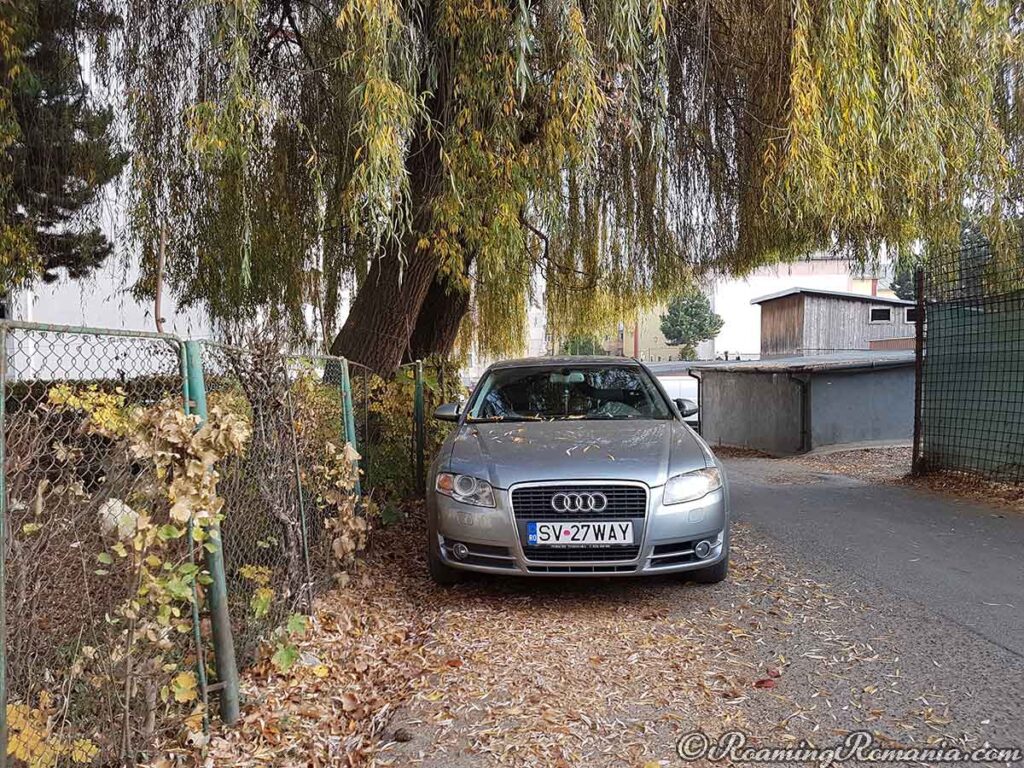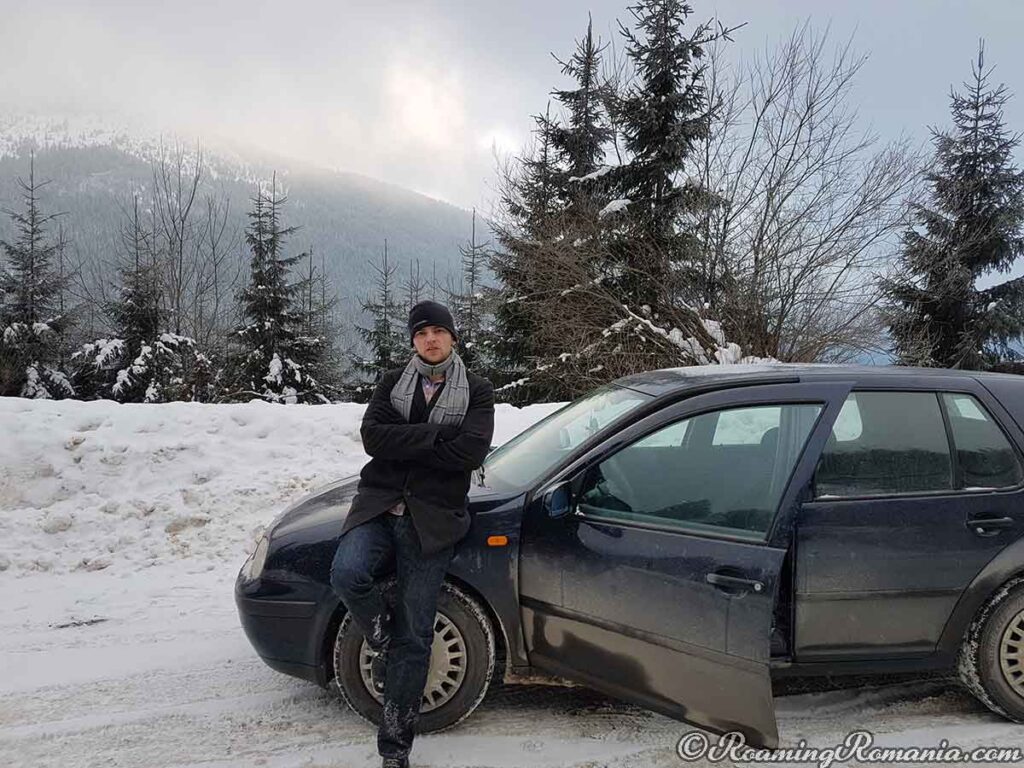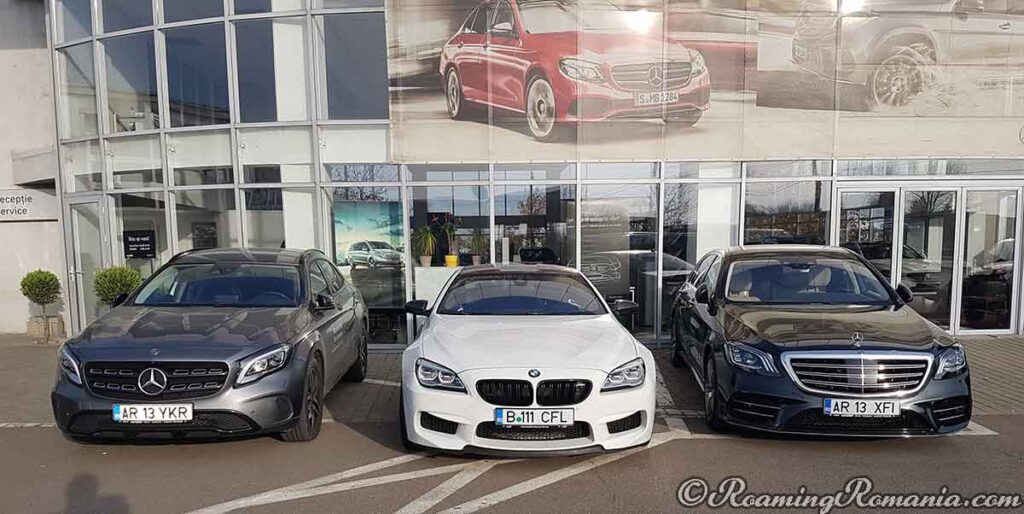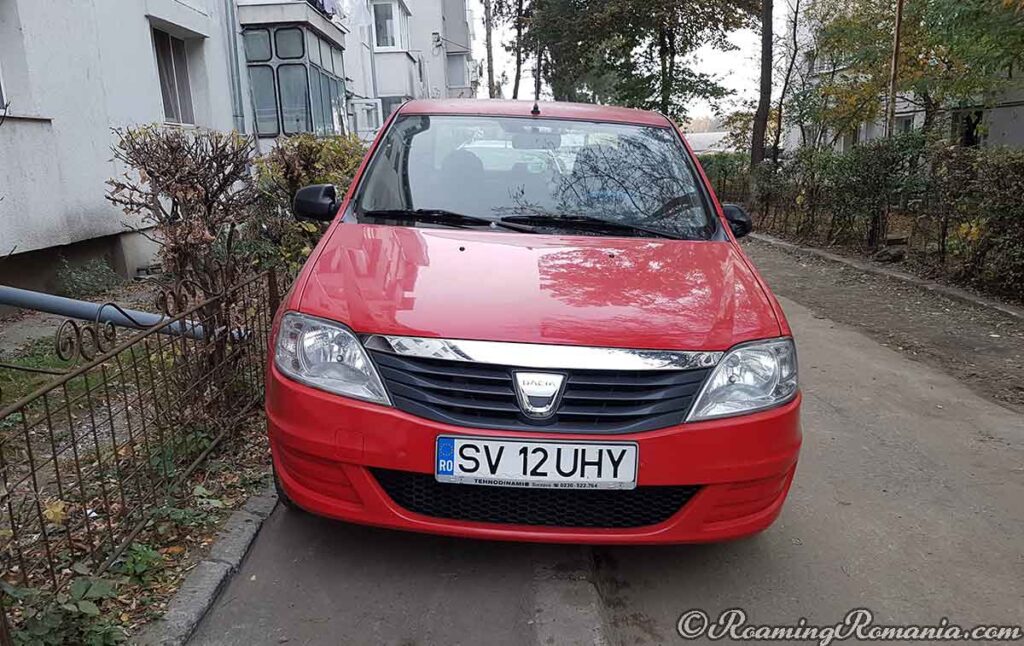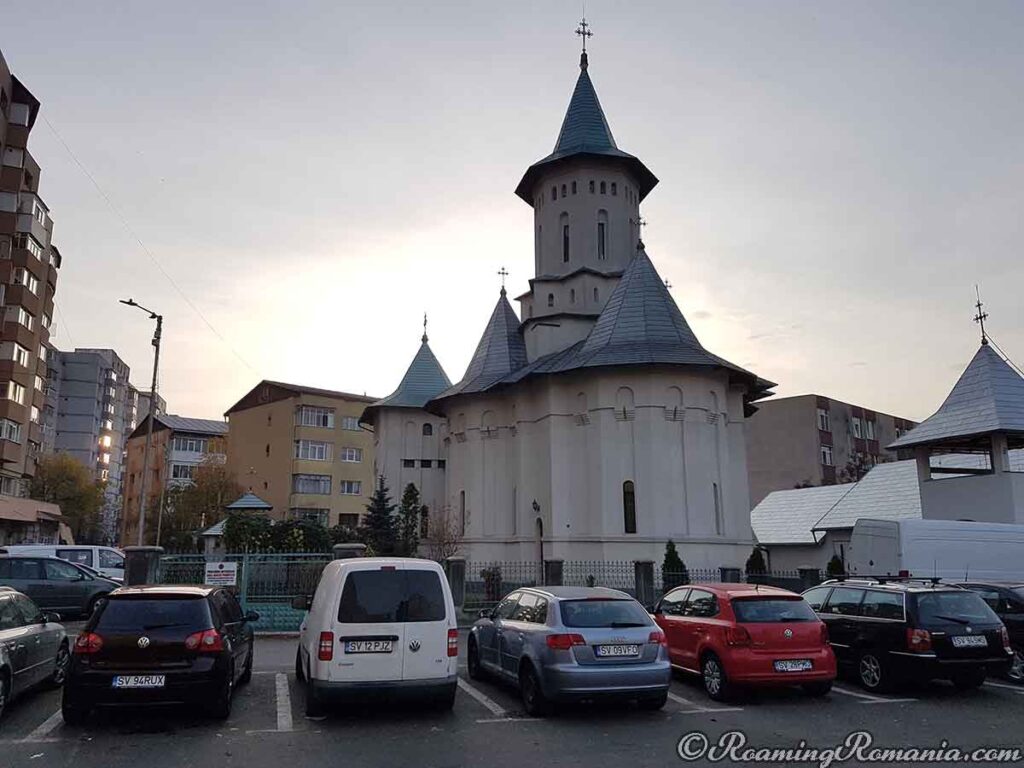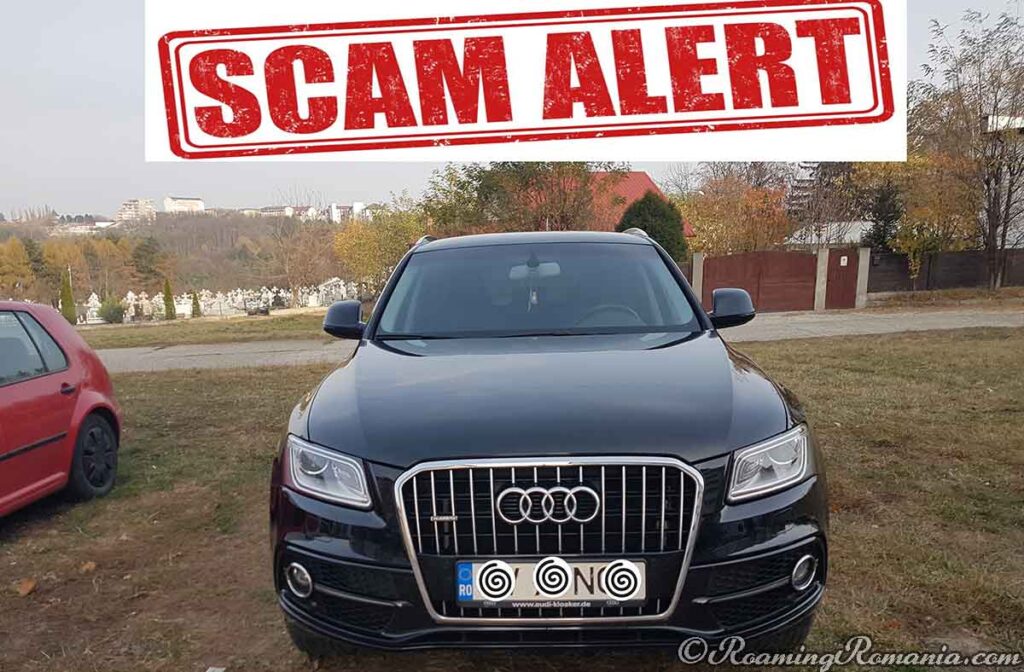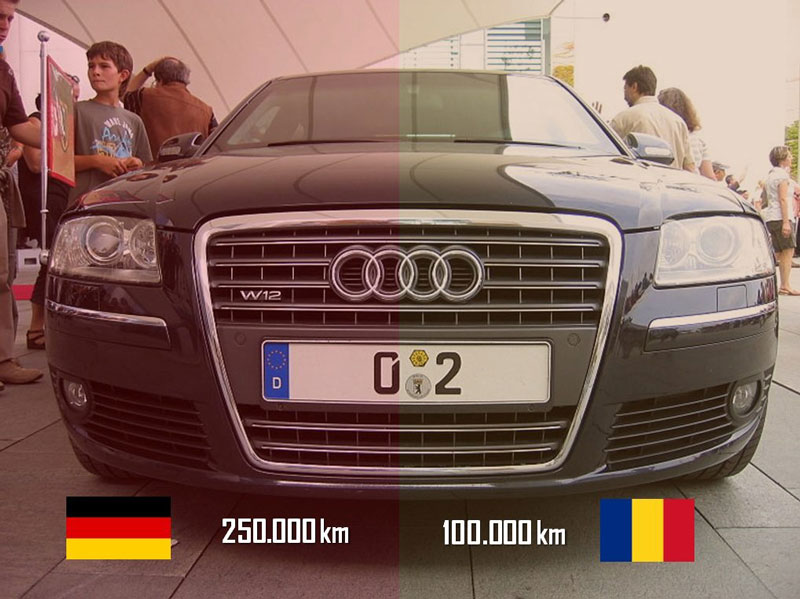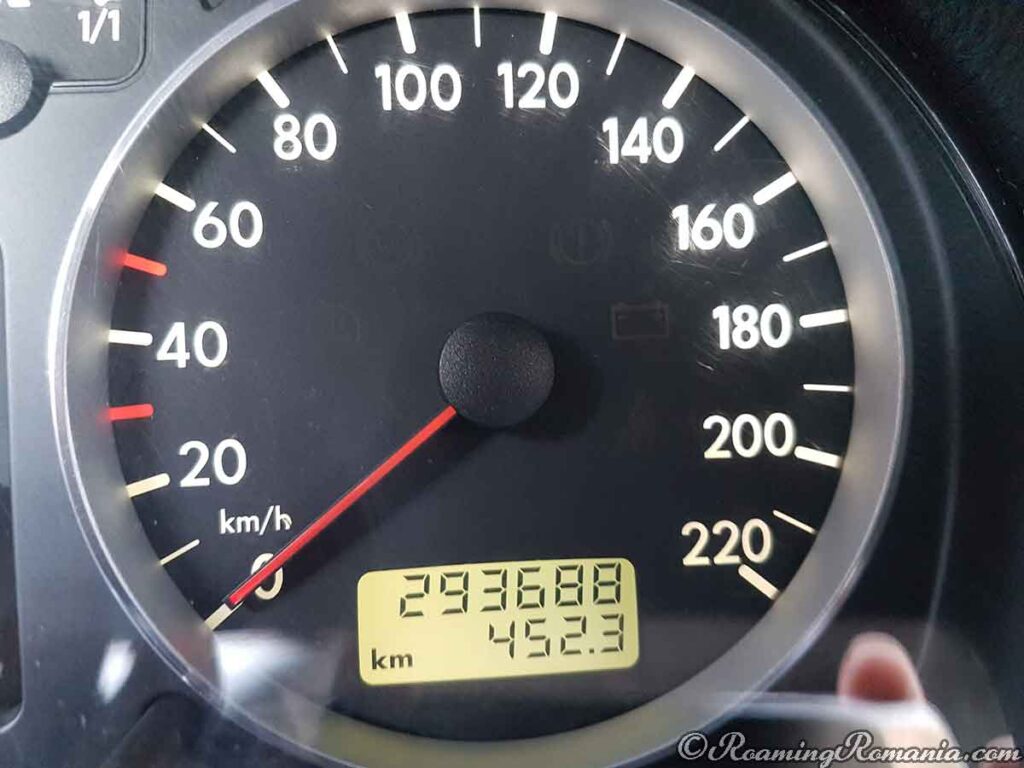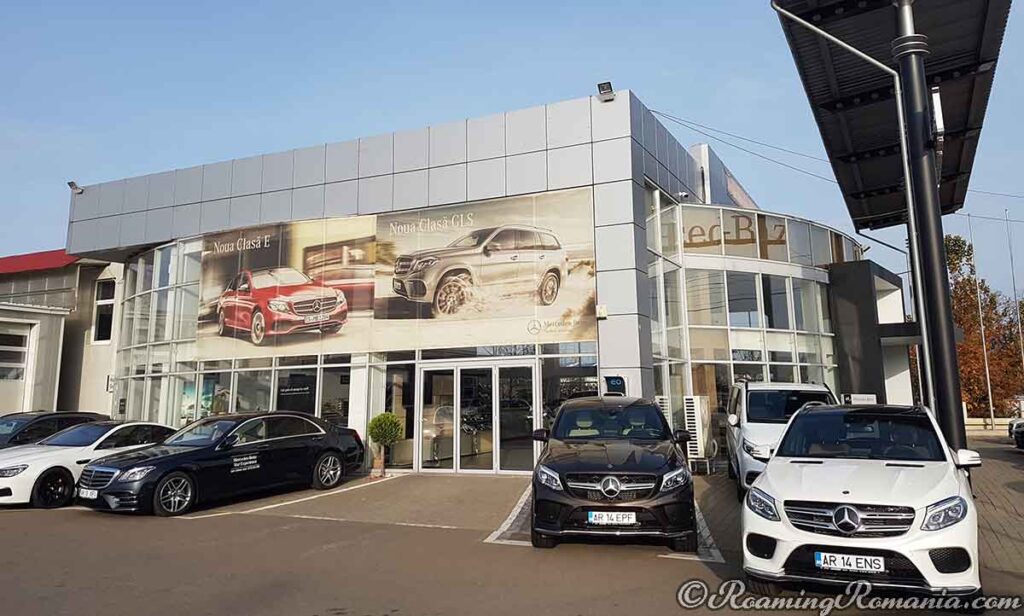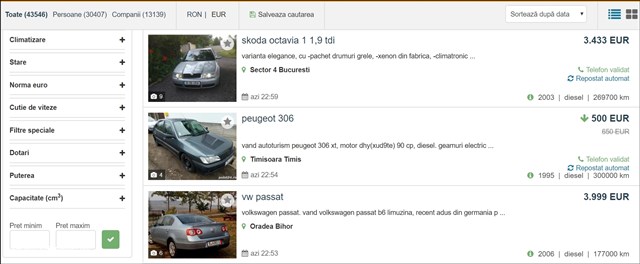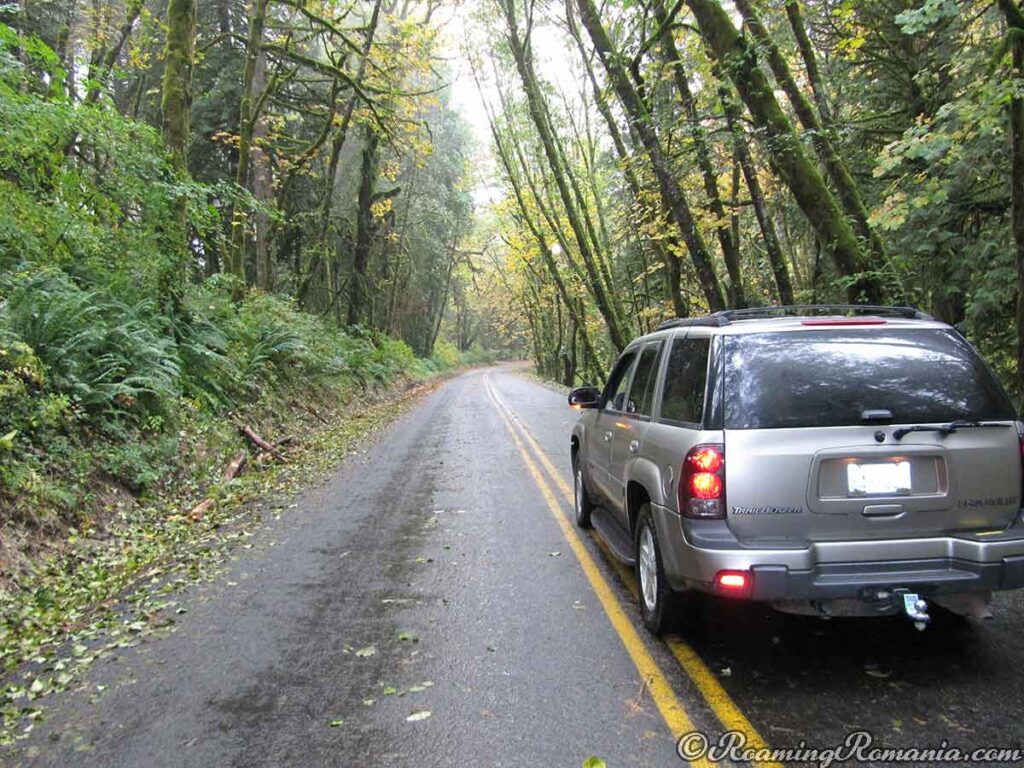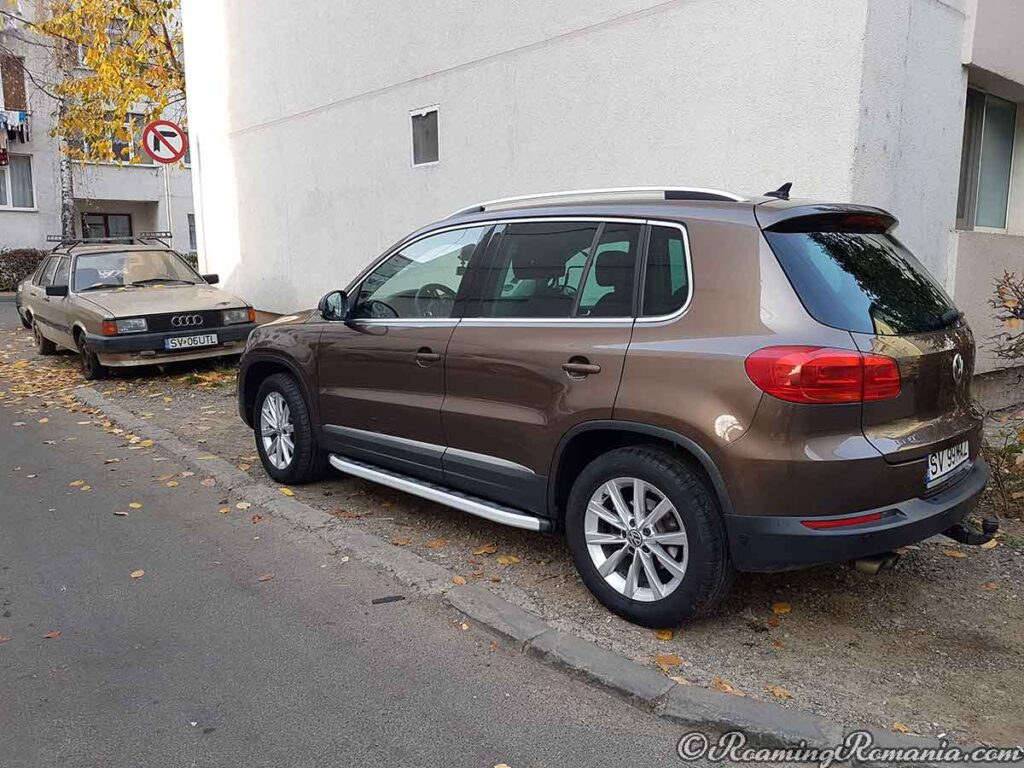Should You Buy a Car in Romania
Buying a car in Romania can be one of the most rewarding, or one of the most dreadful decisions a person can make. There are great advantages and many potential disadvantages to car ownership in the country.
Some of the benefits include the freedom to travel without the reliance on public transportation, added time savings by getting places faster, and an increase in social status. Some of the negatives include the costs of the car purchase and ownership, the added stress of driving in Romania, and a long bureaucratic registration process.
If you’ve already weighed the negatives and positives of owning a car in Romania and have concluded that you want to buy, register, and own a car in the country, then this guide will provide you with every detail you’ll need to know for the process.
However, before going further, you need to keep one thing in mind. Anyone is allowed to buy a car in Romania, but only individuals who have Romanian citizenship, or EU citizens with normal residence in Romania, can register and own the car in the country. To drive in Romania, depending on what country you’re from, you might also need a Romanian driver’s license.
As someone who moved to Romania from the United States, I spent numerous days reading and learning everything I could about the car purchase and registering requirements in the country. Because I did it the right way, buying a car in Romania has been one of the best decisions I’ve made.
Owning a car in Romania helped me take my experiences, opportunities, and adventures to the next level. I am now gladly sharing all the information I’ve gathered about buying a car in Romania with you so you can do the same.
Buying a Car in Romania – Table of Contents
- Buying a Car in Romania Options
- Buy a New Car in Romania
- Buy a Used Car in Romania
- Used Car Scams in Romania
- How To Detect Fake Kilometers
- Where to Buy a Car in Romania
- Import a Car into Romania
- How to Buy a Car in Romania
Buying a Car in Romania Options
When it comes to buying a car in Romania there are many things to consider before taking the plunge. You have to compare the advantages and disadvantages of buying a new or used car.
You must decide if you want to buy the car from within the country, or explore all your options of buying from a different country and importing it into Romania. If those two decisions weren’t hard enough, you have a few more important choices to consider.
You have to figure out if you want to buy the car from a private seller or from a dealership. You need to consider the taxes you will owe based on the type of car you purchase. You have to choose the engine you want, diesel, petrol, or other.
And finally, you have to take all possible measures to ensure you are not getting scammed. Lucky for you, this guide covers everything you need to know about buying a car in Romania.
Buy a New Car vs Used Car in Romania
Your first step in buying a car in Romania is to decide whether you want to buy a new or used car (second-hand). There are advantages and disadvantages to both options.
In the EU, a car is considered new if it is less than 6 months old, and has less than 6,000 km on the odometer. A second-hand car is either older than 6 months from production or has been driven over 6,000 kilometers.
Buy a New Car in Romania
If you have the budget and can afford the price, then buying a new car in Romania is the safest and fastest way to car ownership in the country. As you will discover by reading the upcoming sections, buying a used car in Romania comes with many potential risks and pitfalls.
Most of the risks of buying a used car aren’t present when buying a new car. Although buying a new car in Romania is much easier and safer than buying a used car, there are still many things to take into account when deciding to go with new versus used.
New Car Prices in Romania
Prices of new cars in Romania are fairly competitive to other European Union countries. However, like many other goods, car prices can also vary drastically from country to country in the EU. Starting in 1993, the European Commission published yearly reports that showed new car price differences across EU member states.
The reports, however, were discontinued in 2011 and now only archived copies of the information exist. The only modern way for consumers to compare new car prices between EU countries is by manually doing research. The best way to currently compare car prices across Europe is through the internet.
A person seeking to buy a new car at the most affordable price in Europe should visit the car dealership websites across Europe and compare pricing information in all the countries he’s interested in purchasing a car from.
Don’t forget to check Romania though. You might be surprised at how affordable some new car prices in the country can be. At the same time, searching across Europe might lead you to find a better deal than what is found in Romania. The car price differences across Europe are a result of many different factors and market forces.
Best Selling New Car Brands and Models in Romania
The best selling new car brands and models in Romania have remained relatively unchanged for nearly a decade now.
The last decade’s aggregate of the 5 best selling new car brands in Romania, in order, are Dacia, Volkswagen, Ford, Skoda, and Renault.
And the best selling car models in Romania, in order, are Dacia Logan, Dacia Duster, Dacia Sandero, Skoda Octavia, and Ford Focus.
As you can defer from the above list, the Romanian manufactured Dacia, a subsidiary of the French car manufacturer Renault, is the reigning king when it comes to most popular car brands and models in the country.
There are a few main reasons why Dacia cars sell so well in Romania. The biggest reason is that of their affordability compared to other brands and models, another reason being the company’s historical ties to Romania.
Buy a New Car in Romania Advantages
A major benefit in buying a new car in Romania is that new cars tend to be safer and use the latest technologies in accident prevention and driving assistance. A safe car on Romanian roads is a must, especially when you take into account that Romania has the 2nd most traffic accidents and deaths out of all EU countries.
Another benefit of purchasing a new car is that under EU consumer rights rules you are provided at minimum a 2-year warranty. This can end up saving you a fortune in car maintenance fees.
If you are like the majority of consumers and aren’t an expert in Romania’s second-hand car market, then buying a new car in Romania is the best way you can ensure that you aren’t getting scammed by one of the numerous types of scams that exist in the used car market.
Finally, if you hate bureaucracy and value your time, then you’ll be happy to know that purchasing and registering a car in Romania is a much quicker and smoother process for a new car than it is for a used car.
Buy a New Car in Romania Disadvantages
The biggest disadvantage in buying a new car is, of course, the price tag. If you’re looking at buying a new car in Romania, then be prepared to spend a minimum of around EUR 7,000. Of course, prices can be much more and vary on the brand, model, and options of a car.
Another disadvantage related to price is that when you buy a new car you have to pay VAT tax (19% in Romania) on the total price of the car. If the expensive costs of new cars weren’t bad enough, the next disadvantage in buying a new car is that it will depreciate fast, up to 11% when driving it off the lot, and much more in the coming years.
New car purchases are investments for individuals in the sense that they are buying reliability with a guarantee. New car purchases are not an investment in the sense that they can be resold easily or at a profit.
Buy a New Car in Romania Advantages and Disadvantages
| Advantages | Disadvantages |
| Manufacturer’s Warranty | More Expensive |
| Less Bureaucracy in Purchasing and Registering | VAT Tax |
| Protection from Various Romanian Auto Scams | Faster Depreciating |
| Newer Technology and Safety Features |
Buy a Used Car in Romania
If you don’t have the budget or need for purchasing a new car in Romania then your next option is to buy a used car in Romania’s second-hand car market.
Although many horror stories exist of consumers being swindled, overpaying, or being ripped off in various other ways in the second-hand market, there are also success stories of legitimate deals that take place and are mutually beneficial.
The best way of safeguarding yourself from a potentially bad deal in buying a used car in Romania is by first educating yourself against all the scams and pitfalls you may encounter when deciding to buy second hand.
The good news is that this guide will cover everything you need to about how to buy a second-hand car in Romania. The bad news is that sometimes no matter how well prepared you are, you may still encounter a new element or unexpected problem in the process.
Don’t let the above two paragraphs scare you though, there are many successful used car purchases that take place in Romania each day. After you finish reading this guide you’ll be fully equipped for taking on the process of successfully purchasing a second-hand car in Romania.
The main takeaways you should have is that no deal will be too good to walk away from if you feel something is wrong, and ALWAYS VERIFY as much as possible before buying, even if the sales ad claims everything is 100% legit.
Romania’s Second Hand Car Market
When it comes to car ownership in Romania, the majority of Romanian’s own a second-hand car. The main reason used car ownership is so high in Romania is due to the low salaries and economic struggles of the country.
Many Romanian’s have a need for a car, but can’t afford to purchase a new one. An estimated 3/4ths of cars owned in Romania are used, and as of 2016, the average car age is 12.9 years, with an estimate of reaching 14 years by 2020. Since new car purchases have statistically been low for decades in Romania, the number of used cars found in the country that originate from within the country are also very low.
The majority of second-hand cars available in Romania come from other European countries, mainly Germany, which has the largest car market in Europe. Used car imports into Romania are done by private firms and individuals who look to repackage and resell the cars in the country at a profit.
Although hundreds of thousands of used cars are imported into Romania yearly, the supply of second-hand cars has still not yet met the demand.
The growth in second-hand car imports and registrations also saw a major decline from 2007 to 2017 due to various modified versions of an environmental stamp tax that plagued the population for a decade. The result is that second-hand cars in the country are typically more expensive than in other European countries.
The 2017 elimination of Romania’s controversial environmental stamp tax saw a record level of over 500,000 second-hand cars imported into the country in the same year. Romania’s used car market is projected to grow tremendously in the future.
A major factor for the market’s projected growth is the mass exodus away from diesel engines in other parts of Europe. Diesel engines are becoming less popular, and even getting banned in some European cities. As diesel popularity across Europe continues to dwindle, they are being exported into Romania in mass.
Buy a Used Car in Romania Advantages
Buying a used car in Romania does come with various advantages, the biggest of which is affordability. To buy a decent used car in Romania you typically need a budget of about 2,000 to 3,000 Euros. You can find cheaper good deals but you have to do your due diligence and proceed with caution.
Of course, you can find better and newer second-hand cars, but they also come with higher prices. It all depends on your needs and budget. Another benefit to buying a used car in Romania is that used cars in the country don’t have a VAT tax.
Another advantage of buying a used car in Romania is that the car’s value won’t depreciate at such a fast rate as a new car’s. You can buy a second-hand car for a few thousand Euros, use it for a year or longer, and if you maintained it properly, resell it for close to the same amount that you purchased it for.
The opportunity to resell a car is a major benefit for individuals who need a car for a temporary basis or who seek to recoup a decent amount of money they invested in the purchase. Reselling a new car shortly after buying it comes at a big financial loss.
Buy a Used Car in Romania Disadvantages
Even though you can find a used car deal in Romania that will benefit you, there also exists a high possibility of being taken advantage of. Many used car sellers across the country are dishonest about a car’s history, condition, and real kilometers on the odometer.
You have to be prepared to verify as much about the car as possible or you stand a high chance of being deceived into buying a car under false pretenses. The next section in this guide explains everything you need to watch out for to safeguard yourself.
Another problem with buying a used car is that they are typically sold as is and come with a very limited, or no warranty. That means that any routine maintenance or mechanical failure that occurs has to be paid out of pocket.
It’s not uncommon for an individual to invest a few thousand Euros for a used car, and then short periods later, a few thousand more for repair costs. This problem is especially prolific in Romania as Romanians are known to neglect routine maintenance on cars, opting rather to sell a car when problems arise.
Finally, one of the biggest disadvantages of buying a used car in Romania is the uncertainty of the country’s used car taxes and laws. As mentioned previously, for the last ten years Romanian’s have had to deal with various versions of an environmental tax that in some years made consumers pay more in taxes for a used car than the actual value of the car.
Although this tax has been deemed illegal and removed, politicians in the country seem keen on reintroducing another version of it to penalize used car owners in Romania.
Buy a Used Car in Romania Advantages and Disadvantages
| Advantages | Disadvantages |
| Affordable across differing budgets | Potential of being defrauded |
| Slower depreciation | Limited or No Warranty |
| No VAT Tax | Repair costs |
| Future taxes and bans |
Used Car Scams in Romania
In this section, I’ll detail all the known scams, lies, and potential frauds that are prevalent in Romania’s used car market. I’ll then provide you with the best methods and procedures you can take to protect yourself from them.
If you follow the information in this section you can greatly reduce (but not fully eliminate) the chance of being defrauded when you buy a second-hand car in Romania.
Falsified Invalid Sales Contract Scam
This scam works as follows. An intermediary (known as a samsar in Romania) buys a car in a European country and imports it into Romania without registering it. The samsar then falsifies the original sales contract and forges a new one that completely removes all of his information, but keeps the original seller’s details.
The samsar then lies and tells the buyer that he is acting as an intermediary between the buyer and the original seller to save the buyer time and bureaucracy. The scammer then gets money for the car and leaves the buyer with a car that has a sales contract between the buyer and the original seller of the foreign country (no mention of the samsar on any document).
The buyer then goes to register the car in Romania and can’t do so because he has fake documents from the samsar. The buyer can neither register the car, nor seek recourse with the original seller because the original seller had a contract with the samsar, and not the buyer.
Protecting against this scam is quite easy. When buying a second-hand car that’s had more than one previous owner, always make sure the sales documents include the name and information of the current person you are buying the car from.
If you have any doubts, ask the seller to provide you with copies of the sales contract between him and the original seller. If he insists that he’s acting as an intermediary for a different seller and won’t put his information on the documents, then walk away.
Salvaged Car Scam
The salvaged car scam involves a samsar buying multiple salvaged cars from within Europe, cheaply repairing them, and then selling them at a profit. This scam usually involves higher-end cars as they provide the seller with bigger profit margins.
The samsers buy the totaled cars and import them into Romania under the false guise of dismembering them for parts. However, once inside the country, they piece together multiple cars into one running (and unsafe) car and sell it at a large profit.
To avoid buying a car that’s been totaled and pieced together using cheap and dangerous methods, always make sure you have a car inspected by a professional before you purchase it.
The more expensive the car model, the more important it is that you take this step. The samsars sometimes take very good measures to conceal the work they’ve done on a car, so it’s important to have a trained professional verify the vehicle before you purchase it.
Rolled Back Odometer Scam
The most prevalent used car scam in Romania is the rolled back kilometer scam. This scam is so common that it’s estimated that anywhere from 50% to 70% of all used cars in Romania are affected.
The reason this scam is so widely perpetrated is simple, cars with fewer kilometers sell for higher prices. Other reasons why this scam is so common include that, it’s easy to do, legislation protecting against it is weak, and it’s nearly impossible to physically detect and prove.
The only thing required for a scammer to roll back kilometers on a modern car is a software program that hooks into the car and reprograms the odometer to a desired amount. Many samsars who make car importing their living either own their own kilometer roll back programs or they hire third parties who do it at a cheap price.
Although the practice is deemed illegal in Romania, very little, to almost nothing, has been done to actually enforce the law or go after individuals who abuse it. The vast majority of cars that have their kilometers rolled back are cars which are imported into Romania from other European countries.
When you consider the added costs of importing a car into Romania, such as transportation, time investment, and payment of taxes, you would see the incentive scammers have for deceiving. Importers would see very small or offset profits if they didn’t roll back the kilometers to sell cars at higher prices than they invested to bring them into the country.
Odometer Rollback Dangers
If importers rolling back odometers isn’t bad enough, many cars which are imported into Romania (especially higher-end cars) from other European countries have also had their kilometers rolled back in their originating country.
The odometer scam isn’t exclusive to Romania, it’s a European wide problem. There is a high potential that a car coming from a country like Germany, where it’s estimated every 3rd car has its odometer tampered with, will have had its odometer rolled back two or possibly more times before it’s sold in Romania.
What are the downsides of an altered odometer? First, kilometers on a car are used as indications for when parts need to be replaced and services get done. Overlooking that critical type of maintenance because of false kilometers can pose great safety threats to a driver.
A car’s odometer also defines the cars depreciation and the service life of key components such as its engine. Not knowing what to replace and when can lead to damaging the car or causing great harm to the driver.
So how many kilometers are typically rolled back on a tampered odometer? According to an in-depth study on odometer fraud in the EU, the low-end average is 60,000 km. That number is estimated to be much higher in countries like Romania, where the car fleet age is much older.
The good news is that EU leaders are aware of the high scale volume of the scam, and the negative impact it has on consumers. In 2018 the European Parliament published a comprehensive study that outlines the phenomenon and provides potential solutions.
How To Detect Fake Kilometers
Protecting against the rolled back kilometer scam is harder than protecting against other forms of scams, but it’s not impossible. Once you learn what to look out for and how to evaluate and judge a car for an accurate estimate of its real kilometers, you will be in a much better position to protect against the scam than if you went into the sale blindly.
Although the methods listed below will greatly help you, they are not full-proof. Some scammers invest more time into their scam and incorporate ways to bypass the below verification methods.
How to Detect Fake Kilometers on a Car
1 – Search engine the VIN number. A simple online search can lead to archived results on various websites that have listed information about a car, often times with a date and kilometers of the car. You can cross-reference this information with what the seller is advertising to see if there are any discrepancies, including kilometer differences.
2 – Hire someone in the country who has the equipment and specializes in reading the different computerized hardware components on the brand and model of car you are looking at. A cars ECU, ABS module, gearbox, and tire pressure sensors can all contain a cars real kilometers. If it’s detected that the programming on these components has recently been updated, it’s safe to say the kilometers of the car have also been rolled back.
3 – Use a car verification service and obtain a report on the VIN number of the vehicle you are looking at purchasing. These reports routinely contain the car’s kilometer reading at different dates in the cars history. You can cross-reference the data from a report, with what the seller claims, and come to your own conclusion.
4 – Check service stickers. Car mechanic shops often place stickers inside the engine or car interior compartments that indicate the kilometers a car had when the service took place. If these stickers exist and there is a discrepancy between them and what’s on the odometer, then you know it was rolled.
5 – Check the wear on the car. If a car odometer shows a small reading for a car that has a heavily worn drivers side seat, and or steering-wheel, then you know the car has been used more than the odometer indicates.
6 – Review service record reports. Before going to see the car, you should ask the seller if he has the vehicles service book, and how far back it goes. If the buyer has the original book, you can check its records to see odometer readings at different points in the cars service history.
7 – The best way to protect against odometer fraud is by finding a used car which was purchased new, and ran its life cycle, in Romania. These type of vehicles usually have easily verifiable service records and histories.
Where to Buy a Car in Romania
When it comes to buying a car in Romania, a customer has a few different options of where to try and find a good deal. Each different option has its benefits and disadvantages. Some options are safer, others come with more risk.
The trade-off usually comes in the form of affordability. The cheaper options of where to buy a car in Romania come with more risk, and the more expensive options with less. In the list below I’ll rank the places where you can buy a car in Romania from least risky, to most.
Car Dealerships in Romania
There are car dealerships all over Romania that specialize in selling new or used cars. There is virtually no fraud risk involved when you purchase a new car from an authorized dealer in Romania.
There are also many authorized used car dealers across the country. The downside of buying a used car from a dealership is that the price will usually be 20% to 30% higher than other places. The upsides, however, are numerous.
First, used cars from dealerships usually come with a 6-month to 1-year warranty. Next, buying used from a dealership greatly reduces and nearly eliminates many forms of car fraud.
The vast majority of used cars at dealerships have transparent and available service records and histories. Finally, most used cars sold at dealerships in Romania are technically inspected and sold without hidden defects and problems.
Private Car Sellers in Romania
The next option to consider when searching for a used car to buy in Romania is the private seller. A private seller can either be someone you know that’s selling a car, or an individual you locate through a classified ad.
Obviously, the better you know a person the more confident you can feel about buying from them, the trust problem lies when you buy from a stranger. In Romania, there are thousands of classified ads all over the internet posted by private individuals looking to sell their cars.
Many of the private sales advertised are legitimate, but an overwhelming proportion of them are misleading or fraudulent. Ensuring you get a good deal all depends on how much effort you’re willing to put into verifying the sale.
The benefit of buying a used car from a private individual is that you might find a good car, at an affordable price, with no fraud. The downside, however, is that these types of deals are hard to find and require a great deal of time investment to track down.
Problems in buying from private sellers range from well-meaning individuals unknowingly reselling a car with a rolled odometer or defects, to individuals who roll the odometer themselves and do everything they can to hide its defects.
Many private sellers lie about the car’s history, invent stories of why they’re selling it, and try to rush or pressure you into buying it without allowing you time to verify it. It’s imperative that you don’t go into a deal with a private individual believing without first verifying.
Samsars in Romania
A samsar in Romania is defined as an intermediary or middleman in a business deal. Samsars have only one agenda, to make profits, even if it entails various frauds or tax evasion. The vast majority of used cars available in Romania’s second hand car market were imported into the country by samsars.
Although legitimate samsars who trade in used cars do exist, the odds of finding one are very slim. Most samsars in Romania have a reputation of being scammers for good cause. Samsars are experts in the used car market. They understand motivations of buyers, market supply and demand, and many other factors. Its this knowledge of the used car market that allows samsars to manipulate and perpetrate frauds against consumers.
So where do samsars sell cars? Unfortunately, many samsars pose as private sellers. Samsars advertise cars online in the midst of legitimate ads of other private sellers. Samsar sales headlines usually contain phrases such as “urgent must sell” or “100% legit, all verification accepted”.
The headlines are followed up with stories of the car being previously owned by a grandma who rarely drove it and kept it in immaculate condition. Samsars are also the predominate sellers at car fairs, known as a Târgul de Mașini. These car fairs should be avoided by all except the most experienced buyer, as they are teaming with fraudsters.
There are various ways to tell if you’re dealing with a samsar. The most obvious sign you’re dealing with one is if you detect impatience. To keep profits coming, samsars rush to flood cars into Romania, sell them quickly, and then repeat the process. Samsars will expose themselves if you ask many questions and request different types of car verifications.
They usually get angry at such demands and try to rush you into making the purchase. They will tell you things such as “there are many others waiting to see the car” so you should “buy it fast before the others will”. If a seller refuses to answer a question, is hard to reach over the phone, and tries to rush the sale, chances are he’s a samsar.
Classified Car Ad Websites in Romania
The best and most efficient way to do research into cars, prices, trends, and various other important factors of Romania’s car market is through the internet.
From the comfort of your own home, you can compare car prices, verify VIN numbers, email or call sellers, and carry out many other types of research. Below is a list of the most popular classified car sales sites for purchasing a car in Romania.
Import a Car into Romania
If you can’t find what you’re looking for on the new or used car market in Romania, then your next option is to consider the new or used car market in another country. Although there are various associated added costs to importing a car in Romania, often times it can be worth it.
If you want to import a car into Romania you have to calculate transportation costs for you and the vehicle, lodging expenses, time investment, and dealing with the extra bureaucracy of registering a foreign car in the country.
Importing a Car into Romania from Within the EU
The best place to import a car into Romania is from another European Union country. The main reasons for this are that you won’t have to pay import duties and taxes for bringing the car into the EU since it’s already here.
Another benefit of buying a car within the EU is the existence of the European Consumer Centres Network (ECC-Net). The ECC has an office in each EU country and helps consumers resolve disputes of car purchases across EU member states.
Although the requirements for buying and transporting cars from one EU country to another are similar across the EU, there also exist very important country-specific differences. For example, not all temporary transfer license plates are accepted in every EU country, some countries require you to purchase transit plates from within their country.
To find out country-specific requirements for transferring cars across the EU visit the ECC-Net page on Cross-border car purchase and registration.
The steps required for buying and importing a car from within the EU into Romania are as follows.
- Read the ECC’s full guide on cross border purchases and research EU requirements.
- Do research into car prices, options, and differences across EU countries.
- Pick a country you want to buy and import a car from.
- Research cars in the country, make a list of the ones you desire, contact sellers.
- Secure your finances and make travel and lodging plans to go see and buy the car.
- Make transportation plans (using info from the above guides) to bring the car into Romania.
- Read and follow our guide on how to register an imported car in Romania.
Importing a Car into Romania from Outside the EU
If the car you’re looking for isn’t found in a country within the European Union, or you found an amazing deal outside the EU, then you might consider importing a car into Romania from a non-EU member state.
Importing a car into Romania from outside the EU should be considered a last resort for various reasons. The main issues you will run into have to do with customs. The paperwork for importing a car into the EU can be complicated and tedious.
On top of the paperwork, you will also have to calculate the duties and taxes owed for importing the car. Carfax has a great article detailing customs clearance and import tax when bringing a car from the USA into Europe. Much of the article also applies to importing a car from anywhere outside the EU into the EU.
There are various reasons why someone would import a car from outside the EU into the EU. Here are three examples. First, an expat who moved to Romania from outside the EU might want to bring his car with him to the country. Second, someone might find an amazing deal on a car sale outside of the EU. Third, some car models are not easily found in the EU and need to be imported from other countries.
How to Buy a Car in Romania
It would be nice if buying a car in Romania only involved the exchange of money with a seller in return for sales documents and the vehicle. Although transactions like that are possible, mainly when buying new cars, all other car sales require much more work and time investments.
Below I’ll guide you on the steps you should take when buying a car in Romania. Keep in mind, not everything listed below is mandatory, but the more of it you do, the better chance you have at not being ripped off.
Verifying the Car
So you read the section of this article on where to buy a car in Romania and you’ve narrowed down your search to some cars you would like to buy. You compared prices of the same model with similar features.
You did your best to protect against the known car scams in Romania. You informed yourself about detecting rolled back kilometers. Your next two steps in the verification process are to run some online car reports on the vehicle and then to have a mechanic at a service shop verify it.
Online Car Reports
The reports from online car verification services can tell you a lot about a vehicle that a seller won’t divulge. The websites usually have databases of millions of cars and they gather their data from multiple sources. Reports can contain important car history information of things such as odometer records, service dates, repairs, wrecks, claims, and various other data.
The downside is that these reports typically cost money. I only recommend you run reports on cars you have already verified using free methods first, and then still remained interested in purchasing.
The most popular car report websites for the Romanian car market are the following:
Free Reports
- politiaromana.ro/ro/autovehicule-furate (check if a car is stolen)
- aida.info.ro/prejudicii-rca (check if insurance claim made on car, need owners CNP #)
Paid Reports
Auto Mechanic Verification
If you’ve done all the above-mentioned steps, and you’re still interested in purchasing the car you’re looking at, then your next step is to have it inspected by a mechanic. You will need to call an auto service center in an area where you and the seller agree to set up an appointment.
Tell the mechanic you are wanting to buy a used car and need to have it checked for mechanical defects. I advise you to only take the car to a mechanic you select and not one the seller recommends, to reduce chances of fraud.
The downside to this step is that most sellers will only agree to have a car brought to an auto mechanic for verification only if you pay the bill. This makes sense for the seller. If a seller has many potential buyers that refuse the car after an auto mechanic check, then he would be out of a lot of money in verification fees.
Even if you pay for it, the benefit of having the car verified by a mechanic is that you will have a complete report from a mechanical standpoint on its condition and status.
Documents needed from Seller
So you’ve verified everything you could about the car you were interested in purchasing and you remained convinced that it’s a good deal. Your next step is to exchange the payment with the seller, collect the car required car documents from them.
When you buy a car in Romania, make sure the seller provides you with all of the below mentioned documents. For a more complete explanation of each document, see Obtain Documents from Seller.
- Bill of Sale/Sales Contract – Needs to include the following: Seller and buyers full name and address. Full car price with/without VAT. Car year, brand, model, version, mileage. Date of purchase, payment method, date of delivery, any other special conditions.
- Purchase invoice (from dealerships only) mentioning at least the price without VAT, the car’s chassis number and the VAT number (if its a new car) of the auto dealer .
- Vehicle Identity Card – (Cartea de Identitate a Vehiculului,)
- EU Certificate of Conformity
If the vehicle was previously registered you will also need:
- Original certificate of registration – (Certificatul de Inmatriculare)
- Local Administration alienation certificate, and Seller’s tax certificate – (fisa de inmatriculare si Certificatul fiscal)
After you’ve obtained all the required documents from the seller, your final step is to read and follow our guides on registering and owning a car in Romania. If you have any questions about any part of this guide, please leave a comment below and check back for our reply. Happy car hunting!
